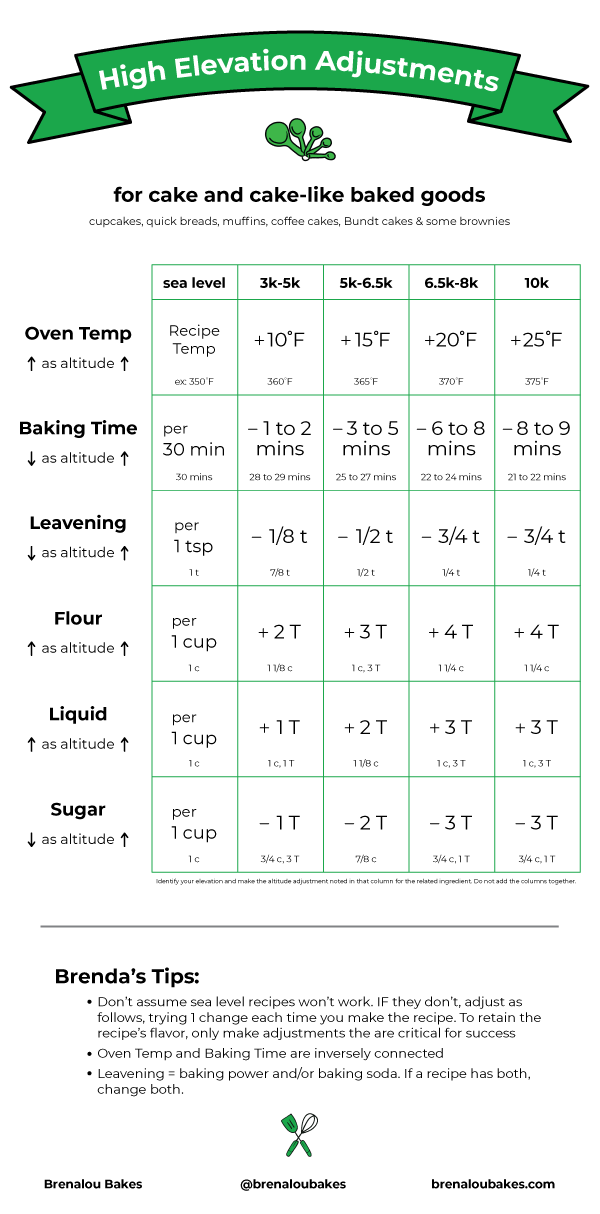HOW TO: Bake Cakes & Cake-like Goods at Different Elevations
Have you ever made a cake, put it in to bake - anticipating golden perfection - but upon opening the oven…
you find a total disaster?
the center a deep crater?
the sides bubbled over with the bottom seemingly dropped out?
You, my friend, are baking at a higher altitude than the recipe was written for. At higher elevations the air pressure is lower than at sea level, disrupting the precious balance needed for baking. A few simple adjustments to the recipes measurements and you’ll once again produce heavenly results.
A word of caution . . . some recipes work at any elevation, so try it before you adjust it. If the recipe doesn't work, start small. I recommend making adjustments one at a time to identify the sweet spot where your recipe creates the most perfect baked good. I also recommend to ALWAYS note what you’ve changed so you'll be able to repeat supreme results.
What makes me qualified to talk about altitude adjustments?
I grew up at 2600
Moved to 4800 for college
Worked at 0 for 10 yrs
Life today is at 6100
I’ve experienced major successes and failures that can be chalked up to altitude. For baking recipes, it's all about perfect proportions and knowing what a negative result actually means.
In general, if something is perfect at sea level then it will **almost** certainly need adjustments.
Chelsea and I developed this infographic to help with high altitude adjustments and it applies particularly to the cake & cake-like segment of baking.
Why will the adjustments make a difference?
Leavening: The lower atmospheric pressure at high altitudes is more rapidly overcome, consequently baking powder and baking soda both work more efficiently, allowing for smaller amounts to produce adequate leavening. The gradual leavening resulting from the reduction of these agents will bring the recipe back to perfection.
Heat/Time: Higher heat helps the baked good to set up more quickly to help offset faster evaporation and the efficiency of leavening, and, inversely, the baking time must be shortened to compensate for the temperature increase.
Flour: Many recipes rely on flour for structural integrity, an increase is often required to balance out the impact of elevation and the other adjustments to maintain requisite form. Flour adjustments are the easiest to over-do. Measure each incremental change and note it so that you know exactly when the perfect structure is reached and can readily replicate refined results.
Liquid: Evaporation speeds up as the atmospheric pressure decreases + that increase of oven temp above . . . an increase in liquid (including milk, eggs, oil, etc. as appropriate) is critical to maintaining the desired succulent texture.
Sugar: Also impacted by evaporation speed, sugar becomes more concentrated resulting in a weakened structure. I personally leaves this adjustment as a last-ditch effort. I feel that an adjustment to sugar has too much potential for a negative impact to flavor. Keep sugar changes as minimal as possible - baked goods need to be sweet.
Interested in learning more?
Here are a few of my favorite altitude resources . . .
